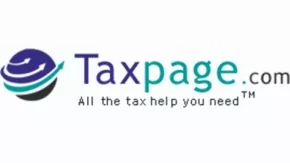- within Tax topic(s)
- with Senior Company Executives, HR and Finance and Tax Executives
- in United States
- with readers working within the Accounting & Consultancy and Property industries
RESP Withdrawals: What Every Contributor and Beneficiary Should Know About Taxes
A Registered Education Savings Plan (RESP) is a government-supported savings vehicle that helps Canadians set aside funds for the post-secondary education of their children or other eligible beneficiaries. Despite its popularity, many Canadians—including both contributors and beneficiaries—remain unclear about how RESP withdrawals are taxed. This article aims to clarify the taxation rules surrounding RESP withdrawals and provide guidance to help families with general tax planning tips for more informed financial decisions.
RESP Withdrawals: A Clear Guide to Tax-Free and Taxable Payments
Withdrawals from a Registered Education Savings Plan (RESP) can be authorized by the subscriber—the individual who established and contributed to the plan. These withdrawals fall into two categories: Post-Secondary Education (PSE) Withdrawals and Educational Assistance Payments (EAPs).
Post-Secondary Education (PSE) Withdrawals
PSE withdrawals consist of contributions made by the subscriber, or other eligible persons, to the RESP. These withdrawals are tax-free because the contributions were made using after-tax dollars. In other words, the funds were already taxed before being deposited into the RESP. Meanwhile, income earned from investments within the RESP continues to grow on a tax-deferred basis.
The subscriber may withdraw the full amount of the contributions at any time and without any limit. There are no restrictions on how the withdrawn contributions may be used. The subscriber may choose to use the funds for personal expenses, for business purposes, or to gift them to the beneficiary. This flexibility exists because the money belongs to the subscriber and has already been taxed prior to contribution.
Educational Assistance Payments (EAPs)
EAPs include government grants such as the Canada Education Savings Grant (CESG), the Canada Learning Bond (CLB), and income earned from investments (including capital gains) generated by the foregoing funds and the subscriber's contributions.
EAPs are intended for the beneficiary and are taxable in the beneficiary's hands. During the first 13 consecutive weeks of enrollment in a qualifying post-secondary program—whether full-time or part-time, in Canada or abroad—EAP withdrawals are limited to $8,000 for full-time students and $4,000 for part-time students. After this initial period, the withdrawal limits are removed unless the beneficiary drops out of school and more than 12 months pass before returning to schooling again.
Withdrawals from the CESG portion of the RESP are subject to a lifetime limit of $7,200. Any excess amounts must be repaid.
The amount of annual EAP withdrawals should be governed by several factors, including the cost and length of the educational program, the beneficiary's other sources of income, and the composition of the RESP (specifically, the ratio of contributions to grant and investment income).
EAP funds may be used to cover the beneficiary's tuition, textbooks, rent, transportation, and other education-related expenses. The beneficiary will receive a T4A slip for any EAP withdrawals and must report this income on his tax return for the applicable year. However, the tax impact can often be minimized if the student:
- Claims available education-related tax credits and deductions;
- Avoids large withdrawals that could push him into a higher tax bracket;
- Times withdrawals to align with years of lower income (e.g., years without a co-op placement or full-time work).
What Happens to Unused RESP Funds? Options, Taxes, and Transfers Explained
If the proposed beneficiary of an RESP chooses not to pursue post-secondary education—or attends a qualifying institution but leaves unused funds in the RESP—there are several options available for managing the remaining balance.
One option is to transfer the unused funds into the contributor's or the contributor's spouse's Registered Retirement Savings Plan (RRSP), provided there is sufficient contribution room to avoid an RRSP over contribution penalty. Alternatively, the subscriber may change the beneficiary to or transfer the funds into the RESP of a sibling of the original beneficiary, or another qualifying individual.
Since RESPs can generally remain open for up to 36 years, the contributor may choose to leave the plan open in case the beneficiary decides to pursue further qualifying education in the future. During this time, the remaining funds can continue to grow through investment income.
Another option is for the subscriber to withdraw the investment income earned within the RESP and close the account. However, any government grants or bonds in the plan must be repaid to the government. Additionally, certain conditions must be met: the RESP must have been open for at least 10 years, and the beneficiary must be at least 21 years old and have not attended a post-secondary institution.
These withdrawn earnings are referred to as Accumulated Income Payments (AIPs). AIPs are taxable in the hands of the subscriber at his or her marginal tax rate, plus an additional 20% penalty tax. To avoid these taxes, the subscriber has two primary options:
- Transfer to an RRSP: The subscriber may transfer up to $50,000 in AIPs into his or her RRSP, or into a spouse's RRSP, provided there is sufficient contribution room. For joint subscribers, the combined transfer limit is $100,000.
- Transfer to a Registered Disability Savings Plan (RDSP): If the beneficiary qualifies for an RDSP and is under the age of 60, up to $200,000 in AIPs may be transferred. However, once withdrawn, these amounts will be taxable to the beneficiary and may disqualify him from receiving the Canada Disability Savings Grant.
If the subscriber is not eligible to receive AIPs and the beneficiary is ineligible to receive Educational Assistance Payments (EAPs), the funds may be donated—on a tax-free basis—to a designated educational institution in Canada. However, no donation receipt will be issued, since the gift is considered to come from the RESP trust itself, not from the subscriber or the beneficiary.
Pro Tax Tips: Why Consulting a Canadian Tax Lawyer Is Crucial Before Withdrawing From an RESP
Before making withdrawals from an RESP, whether as a subscriber or on behalf of a child or eligible beneficiary, it is wise to consult an experienced Canadian tax lawyer. Proper planning can help clarify withdrawal goals and future income plans, minimizing the risk of unexpected tax bills for both the subscriber and the beneficiary. This advice also applies when deciding to close the RESP account.
Expert guidance is especially important when the subscriber is a non-resident seeking to close the RESP and withdraw Accumulated Income Payments (AIPs), or when authorizing Educational Assistance Payments (EAPs) to a beneficiary who is a non-resident.
Different tax rules apply in these cases. It is important to note that simply studying or attending school outside Canada does not make the beneficiary a non-resident for Canadian tax purposes. However, a knowledgeable Canadian tax lawyer can help navigate the complexities of residency determination in such situations.
Frequently Asked Questions (FAQs):
What are the two types of RESP withdrawals, and how are they taxed?
RESP withdrawals fall into two categories:
- Post-Secondary Education (PSE) Withdrawals: These consist of contributions made by the subscriber (or other eligible persons). Since the contributions were made using after-tax dollars, PSE withdrawals are tax-free. The subscriber can withdraw the full amount at any time and use the funds without restrictions.
- Educational Assistance Payments (EAPs): These include government grants (CESG, CLB) and investment income earned within the RESP. EAPs are taxable in the hands of the beneficiary and are used for education-related expenses such as tuition, rent, and textbooks.
What are Accumulated Income Payments (AIPs), and how are they taxed?
AIPs are the investment earnings within an RESP that are withdrawn when the plan is closed and unused for education. They are:
- Taxable at the subscriber's marginal tax rate,
- Subject to an additional 20% penalty tax,
To avoid this penalty, the subscriber may:
- Transfer AIPs to an RRSP (up to $50,000 for individuals or $100,000 for joint subscribers, subject to RRSP room); or
- Transfer to a Registered Disability Savings Plan (RDSP) of the beneficiary, up to $200,000, if the beneficiary is under 60 years old. However, such transfers are taxable to the beneficiary when withdrawn and may disqualify him from the Canada Disability Savings Grant.
What are some ways a student can minimize the tax impact of EAP withdrawals?
The tax impact can often be minimized if the student:
- Claims available education-related tax credits and deductions.
- Avoids large withdrawals that could push the student into a higher tax bracket.
- Times withdrawals to align with years of lower income (e.g., years without a co-op placement or full-time work).
The content of this article is intended to provide a general guide to the subject matter. Specialist advice should be sought about your specific circumstances.


